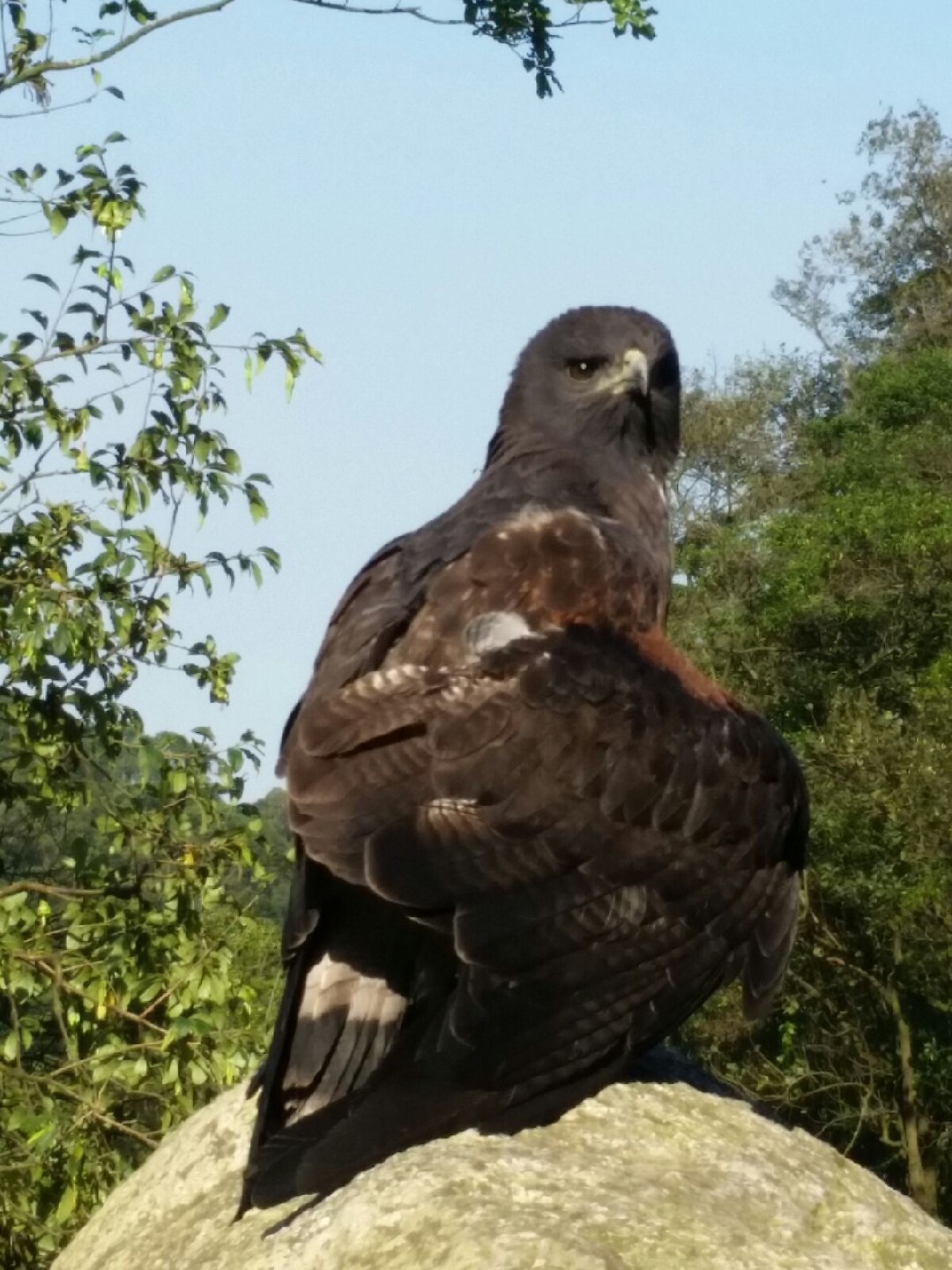Harris's Hawk
A species of Harris' Hawks, Also known as Louisiana Hawk Scientific name : Parabuteo unicinctus Genus : Harris' Hawks
Harris's Hawk, A species of Harris' Hawks
Also known as:
Louisiana Hawk
Botanical name: Parabuteo unicinctus
Genus: Harris' Hawks
Content
Description People often ask General Info
 Photo By Jorgesienna , used under CC-BY-SA-4.0 /Cropped and compressed from original
Photo By Jorgesienna , used under CC-BY-SA-4.0 /Cropped and compressed from original Description
The harris's Hawk has a unique personality trait that sets it apart from other raptors. It is a social bird that hunts and nests in groups. Most females lay their eggs in the spring, but it is not uncommon for two or three clutches to occur when food is plentiful. The raptor primarily hunts small mammals, but juveniles are known to eat insects.
Size
43 - 61 cm
Life Expectancy
14 years
Nest Placement
Tree
Clutch Size
1 - 5 eggs
Number of Broods
31 - 36 days
Nestling Period
44 - 48 days
Feeding Habits
Harris's Hawk primarily consumes medium-sized mammals, including hares and rodents, with additional intake of birds, reptiles, and large insects. Cooperative hunting enables tackling larger prey, sometimes over 2 kg. Prey may be cached for later, and larger kills are defended within group.
Habitat
Harris's Hawk thrives in semiopen desert lowlands, sparse woodlands, and semi-deserts, often near mesquite, saguaro, and organ pipe cactus. These adaptable birds also occupy marshes and mangrove swamps where tree canopies provide nesting sites. Key to their survival, water sources in their arid homes are vital. Recently, harris's Hawk's territory has expanded into urban environments as it adjusts to human presence.
Nest Behavior
Harris's Hawk sees nest construction with added material throughout the season. Egg incubation is mainly the female's role, while the group aids in feeding. Multiple broods per year are possible, dependent on prey availability.
Nest Characteristics
Harris's Hawk's nests are positioned in tall structures such as cacti, trees, cliffs, or artificial constructs. Built predominantly by the female, these bulky nests consist of sticks, cactus parts, feathers, and down, measuring 18-24 inches across and 9 inches deep, with an elliptical possibility.
Dite type
Carnivorous
People often ask
General Info
Feeding Habits
Bird food type
Behavior
Harris's Hawk are remarkable for their complex social structures, exhibiting cooperative behaviors seldom seen in bird of prey species. They are known for organized group hunting, where members synchronize their actions to capture prey more efficiently, and they work together to defend their territories throughout the year. Daily life for harris's Hawk also includes sophisticated social interactions, such as establishing a pecking order during feeding times. Although they fly with great agility and can perform dazzling aerial maneuvers, these hawks are also comfortable on the ground, running and hopping after prey when necessary. Their social bonds are reinforced through behaviors like perching closely together and engaging in low-level aggression to maintain group dynamics. Additionally, these birds of prey perform dramatic aerial displays, such as sky dancing during courtship or territory defence, and exhibit the unusual behavior of backstanding, where one bird stands on another's back, likely as a form of competition for perching spots.
Species Status
Not globally threatened.